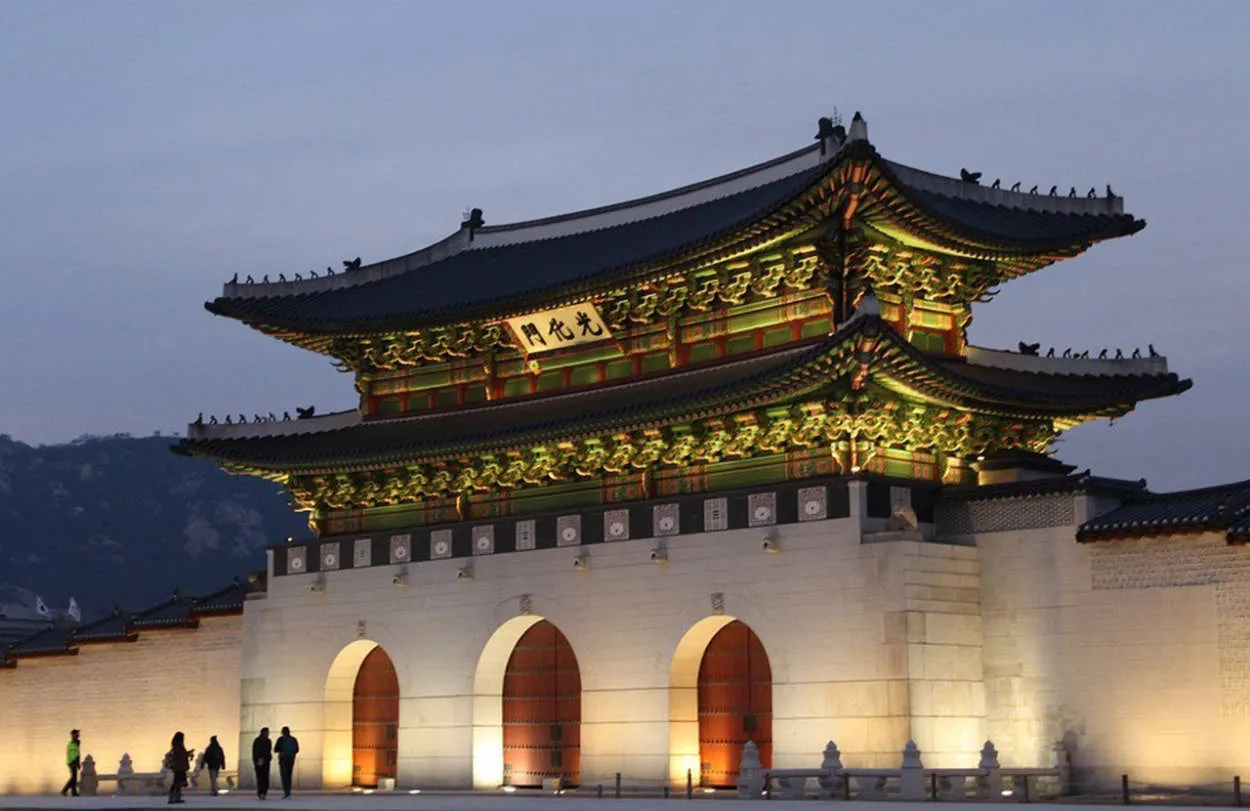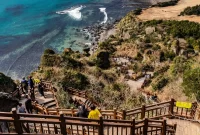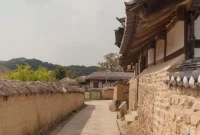Korean Palaces and Temples: Architectural Marvels and History
The Grandeur of Gyeongbokgung Palace
Gyeongbokgung Palace is a majestic masterpiece that stands as a testament to Korea’s rich history and architectural brilliance. Located in the heart of Seoul, this grand palace was originally built in 1395 and served as the main royal residence of the Joseon dynasty.
As you step through its imposing gate, called Gwanghwamun, you will be transported back in time to an era of kings and queens. The palace grounds span a vast area, featuring meticulously designed buildings, pavilions, and gardens that harmoniously blend with the natural surroundings.
One of the most iconic structures within Gyeongbokgung Palace is Geunjeongjeon Hall. This main throne hall impresses with its intricate detailing and sheer size. It was here that important state affairs and royal ceremonies took place, leaving visitors in awe of the history embedded in its walls.
Exploring further, you will encounter smaller halls and quarters where the royal family lived and conducted their daily activities. Don’t miss the Gyeonghoeru Pavilion, an elegant structure set atop a pond, where banquets and receptions were held. The soothing sound of water and the serene scenery make it a popular spot for visitors.
While wandering through the palace grounds, take a moment to appreciate the traditional Korean architecture, known for its emphasis on harmony and balance. The vibrant colors and intricate patterns adorning the buildings will captivate your senses.
To enhance your visit, consider attending the Royal Guard Changing Ceremony, which reenacts the intricate ritual of changing the palace guards. This colorful spectacle offers a glimpse into the past and adds a touch of authenticity to your experience.
Whether you are a history enthusiast, an architecture lover, or simply seeking a glimpse into Korea’s royal past, Gyeongbokgung Palace offers a truly unforgettable experience. Immerse yourself in the grandeur and beauty of this architectural marvel, and let the stories of the past transport you to a bygone era.
Exploring the Tranquility of Jogyesa Temple
Jogyesa Temple is a prominent Buddhist temple located in the heart of Seoul, South Korea. As one of the most important temples in the country, Jogyesa offers a serene and tranquil environment that allows visitors to immerse themselves in the rich cultural heritage of Korea.
Aesthetic Beauty and Architecture
The temple is renowned for its captivating architecture, which showcases the beauty of traditional Korean design. The vibrant colors, intricately carved woodwork, and gracefully curved rooftops create a visually stunning and captivating experience for all who visit.
Buddhist Traditions and Practices
Jogyesa Temple serves as the headquarters of the Jogye Order, the largest Buddhist sect in Korea. Here, visitors have the opportunity to observe and participate in traditional Buddhist rituals, such as chanting, meditation, and ceremonial events, immersing themselves in the spiritual practices that have been passed down through generations.
Historical Significance
With a history spanning over six centuries, Jogyesa Temple carries deep historical significance. It has stood witness to various tumultuous periods in Korean history and has played a crucial role in preserving and promoting Buddhist teachings throughout the years.
Cultural Experiences and Festivals
Visiting Jogyesa Temple provides a unique opportunity to engage in Korean cultural experiences. The temple hosts numerous traditional festivals and events, such as the Lotus Lantern Festival and the Buddha’s Birthday Celebration, where visitors can witness vibrant parades, colorful lantern displays, and traditional performances.
Meditative Tranquility
A visit to Jogyesa Temple offers a retreat from the bustling city life of Seoul. The peaceful ambiance, lush gardens, and the calming scent of incense create an atmosphere conducive to introspection and serenity. Whether you seek spiritual enlightenment or simply a moment of respite, Jogyesa Temple provides an oasis of tranquility.
Conclusion
In conclusion, Jogyesa Temple is an architectural marvel and historical treasure that allows visitors to delve into the essence of Korean Buddhism and experience the tranquility it offers. With its aesthetic beauty, profound religious traditions, and cultural experiences, Jogyesa Temple truly stands as a testament to Korea’s rich heritage.
Learning About the Cultural Significance of Changdeokgung Palace
Nestled in the heart of Seoul, Changdeokgung Palace is a remarkable testament to Korea’s rich history and cultural heritage. As one of the Five Grand Palaces built during the Joseon Dynasty, this architectural marvel holds immense historical significance.
Changdeokgung Palace was constructed in 1405 and served as the main palace for the royal family until the early 1900s. It blends both traditional Korean and Confucian elements, showcasing the unique architectural style of the period. The palace was meticulously designed to harmonize with the natural surroundings, making use of the existing terrain and incorporating scenic features.
One of the palace’s most iconic features is its beautiful Secret Garden, known as Huwon. This expansive garden spans over 78 acres and is a prime example of Korean landscape design. Its meticulously arranged pavilions, ponds, and lush flora create a serene atmosphere, offering visitors a glimpse into the royal leisure and contemplation.
Changdeokgung Palace also holds immense cultural value, being home to countless historical artifacts and treasures. The palace complex houses various halls, including the throne hall, council hall, and king’s bedroom, each serving a different function in the daily life of the royal court.
Visiting Changdeokgung Palace is not only an opportunity to admire the architectural splendor but also a chance to immerse oneself in Korea’s cultural heritage. Guided tours are available, allowing visitors to delve deeper into the history and significance of each building and area within the palace complex.
Overall, Changdeokgung Palace stands as a symbol of South Korea’s rich past and offers a fascinating glimpse into royal life during the Joseon Dynasty. Its unparalleled beauty and cultural importance should not be missed by those seeking to explore the wonders of Korean architecture and history.
Conclusion
The palaces and temples in Korea stand as remarkable architectural wonders, blending intricate designs with a rich history. These majestic structures not only showcase the country’s cultural heritage but also provide a glimpse into the royal life of ancient Korea. Visiting these sites allows one to journey back in time and experience the grandeur of the past.




